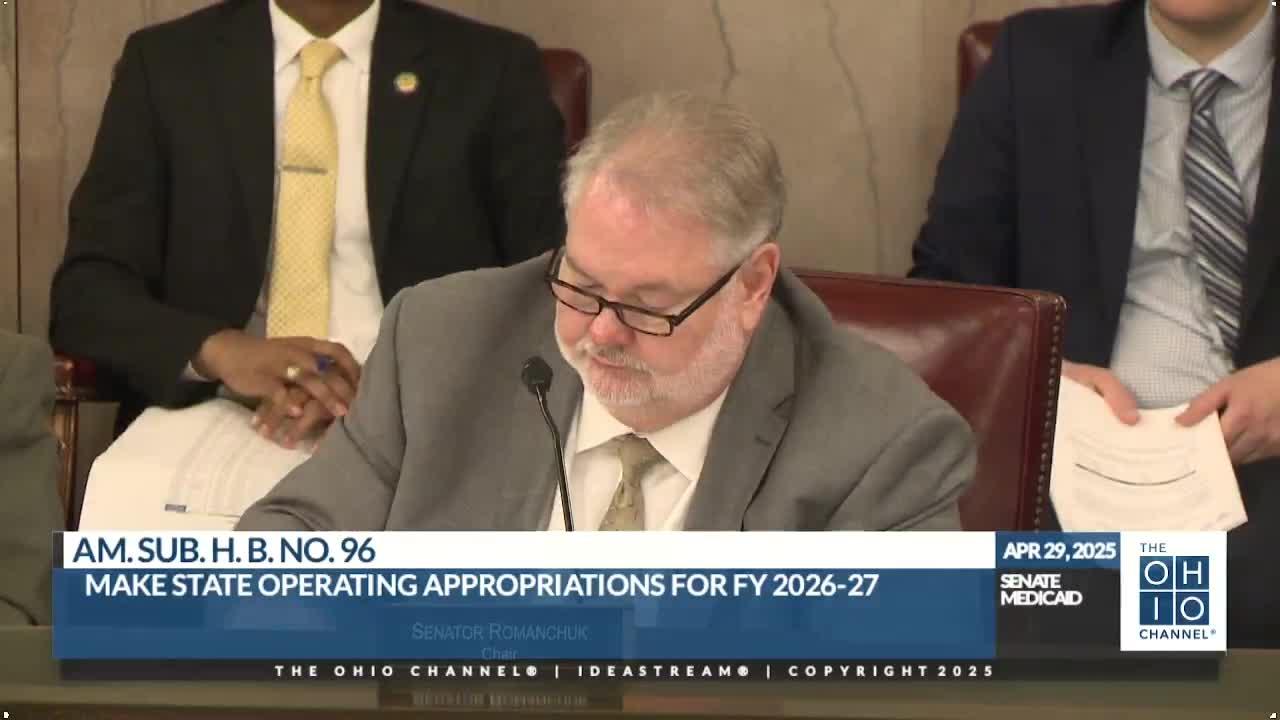Senator Huffman discusses funding strategies for rural hospitals in Texas
April 29, 2025 | Medicaid, Senate, Committees, Legislative, Ohio
This article was created by AI summarizing key points discussed. AI makes mistakes, so for full details and context, please refer to the video of the full meeting. Please report any errors so we can fix them. Report an error »

Ohio's Medicaid Committee convened on April 29, 2025, to discuss critical funding strategies for hospitals across the state, particularly focusing on the implications of the executive budget and the distribution of state-directed payments. The meeting highlighted the financial landscape for hospitals, especially in rural areas, as they navigate funding challenges.
A key point of discussion was the executive budget's recommendation to initiate certain funding measures in the second year, which means no immediate impact on hospital funding in the first year. The committee reviewed a detailed spreadsheet outlining the financial implications for hospitals, including current funding levels and projected changes due to the new budgetary measures. This analysis aimed to clarify how state-directed payments would affect hospitals, particularly those in rural regions that often face financial strain.
Senator Huffman raised concerns about how rural hospitals would secure necessary funding without local tax revenue. The committee acknowledged that without public tax-generated funds, hospitals would struggle to access additional state-directed payments. The discussion also touched on partnerships with public medical schools, which could provide some financial relief through collaborative projects.
The committee emphasized the importance of leveraging local tax dollars and developing agreements with county commissioners to enhance funding opportunities for hospitals. This approach aims to ensure that hospitals can meet patient care needs while navigating the complexities of state funding.
As the committee continues to refine its strategies, the implications of these discussions are significant for Ohio's healthcare landscape, particularly for rural hospitals that rely heavily on state support to sustain operations and provide essential services to their communities. The next steps will involve further collaboration and planning to ensure that the funding mechanisms are effectively implemented to benefit all hospitals across the state.
A key point of discussion was the executive budget's recommendation to initiate certain funding measures in the second year, which means no immediate impact on hospital funding in the first year. The committee reviewed a detailed spreadsheet outlining the financial implications for hospitals, including current funding levels and projected changes due to the new budgetary measures. This analysis aimed to clarify how state-directed payments would affect hospitals, particularly those in rural regions that often face financial strain.
Senator Huffman raised concerns about how rural hospitals would secure necessary funding without local tax revenue. The committee acknowledged that without public tax-generated funds, hospitals would struggle to access additional state-directed payments. The discussion also touched on partnerships with public medical schools, which could provide some financial relief through collaborative projects.
The committee emphasized the importance of leveraging local tax dollars and developing agreements with county commissioners to enhance funding opportunities for hospitals. This approach aims to ensure that hospitals can meet patient care needs while navigating the complexities of state funding.
As the committee continues to refine its strategies, the implications of these discussions are significant for Ohio's healthcare landscape, particularly for rural hospitals that rely heavily on state support to sustain operations and provide essential services to their communities. The next steps will involve further collaboration and planning to ensure that the funding mechanisms are effectively implemented to benefit all hospitals across the state.
View full meeting
This article is based on a recent meeting—watch the full video and explore the complete transcript for deeper insights into the discussion.
View full meeting
